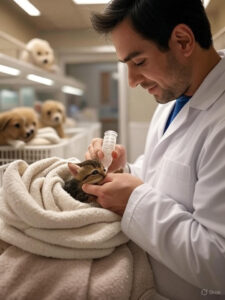No, early teething by itself doesn’t mean your child has autism. However, if you notice early teething plus other developmental concerns, it’s worth talking to your doctor. The Autism Science Foundation explains that autism diagnosis# Early Teething and Autism: What Parents Need to Know About This Important Connection
Introduction
Scientists have discovered something surprising: when your baby’s teeth come in early (or late), it might tell us something important about autism. This doesn’t mean every baby who gets teeth early has autism – but it could be one early sign to watch for.
Most parents know to look for things like whether their baby smiles back at them or says their first words on time. But now researchers think the timing of when teeth appear might also be important. A major study found that babies who later showed signs of autism often got their first teeth much earlier than usual.
This is exciting news because it means parents and doctors might be able to spot autism signs even earlier than before. The sooner we know, the sooner we can help.
When Do Babies Usually Get Their Teeth?
Normal Teething Timeline
Every baby is different, but most babies get their first tooth between 4-7 months old. Here’s what usually happens:
When teeth normally appear:
- 4-7 months: Bottom front teeth (the cute little ones!)
- 8-12 months: Top front teeth
- 9-16 months: Side teeth
- 16-23 months: Pointed teeth (canines)
- 23-33 months: Back teeth (molars)
What is “Early” Teething?
Early teething means getting teeth before 4 months old. While this isn’t always a problem, recent research shows it might be connected to autism in some cases.
Things that can affect when teeth come in:

Should Parents Track Both Early and Late Teething?
Yes, monitoring both premature and delayed teething patterns provides valuable developmental information. Any significant deviation from typical timelines should be discussed with healthcare providers, especially when combined with other developmental concerns.
How Do Teething Anomalies Fit Within ASD Screening?
Teething patterns increasingly appear in comprehensive developmental assessments. While not part of standard autism diagnostic criteria, unusual teething timing can provide valuable information about underlying genetic or developmental differences.
Can Early Teething Alone Indicate Autism?
No, premature teething alone cannot diagnose autism spectrum disorder. However, when combined with other developmental indicators, it may serve as an early warning sign warranting professional evaluation. The Autism Science Foundation emphasizes that autism diagnosis requires comprehensive assessment of multiple developmental domains.
What Constitutes Late Teething?
Late teething typically refers to the absence of any teeth by 12 months of age. However, some children may experience delayed teething without any underlying developmental concerns. Professional evaluation helps determine whether delayed teething warrants intervention.
- What mom ate during pregnancy
- Family history (did mom or dad get teeth early?)
- Baby’s overall health
- Hormones
What is “Late” Teething?
Late teething means no teeth by 12 months old. Again, this isn’t always a problem, but combined with other delays, it might be worth checking with your doctor.
The Big Discovery: Early Teeth and Autism
What Scientists Found
A really important study found something interesting: many children with a type of autism called ADNP syndrome got their first teeth much earlier than other babies. In fact, 78% of these children got teeth before the normal time.
Here’s what the research showed:
- Kids with this type of autism often got teeth 6-12 months early
- These early teeth appeared before parents noticed other autism signs
- The earlier the teeth, the more likely other autism signs would appear later
What is ADNP Syndrome?
ADNP syndrome is a genetic condition that causes autism, learning difficulties, and some physical differences. It’s not super common – it affects about 1 in 600 children with autism.
The reason it affects teething is because the same genes that control brain development also help control when teeth grow. When these genes don’t work normally, both the brain and teeth can be affected.
Why This Matters for Parents
This discovery is exciting because it means parents might notice early teething and ask their doctor about it, even before other autism signs appear. Remember – early teething doesn’t mean your child definitely has autism, but it’s something to keep an eye on along with other development.
Other Early Signs of Autism to Watch For
Social and Communication Signs
While teething timing is interesting, it’s just one piece of the puzzle. Here are other early signs that might appear with unusual teething patterns:
Things to watch for:
- Not pointing at things they want by 12 months
- Not looking where you’re pointing
- Not making eye contact during feeding or playing
- Not responding to their name
- Losing words or skills they used to have
Language Development
The Centers for Disease Control and Prevention says to watch for these language signs:
- Not babbling by 12 months
- Not saying single words by 16 months
- Not putting two words together by 24 months
- Repeating the same words over and over
Play and Behavior
Other signs include:
- Playing with toys the same way every time
- Getting very upset by small changes
- Not playing pretend games
- Seeming to have trouble with loud noises or textures
When to Talk to Your Doctor
Screening Tools Doctors Use
Doctors have special checklists to help spot autism early. Some of these now include questions about teething timing:
Common screening tools:
- CHAT: Used at 18-month checkups
- M-CHAT: A longer checklist that covers more areas
- Denver Test: Looks at all areas of development
Regular Doctor Visits
The American Academy of Pediatrics recommends talking about teething at regular checkups. Your doctor should write down:
- When your baby’s first tooth appeared
- What order the teeth came in
- Any concerns you have
- Your family’s history with development
When to Ask for More Help
You should ask for a referral to a specialist if you notice:
- Very early teething (before 4 months) plus other delays
- Several missed milestones
- Your child losing skills they used to have
- Your gut feeling that something isn’t right
Remember, getting help early – like the structured approaches described in recovery guides for new parents – can make a huge difference.
What Parents Can Do Right Now
Keep Track of Teething
It’s a good idea to write down when your baby’s teeth come in. You can note:
- Date of first tooth
- Which teeth came in what order
- Any changes in eating or sleeping
- New behaviors you notice
Things That Can Affect Teething
Harvard Health Publishing mentions several things that might affect both teething timing and development:
- How well mom ate during pregnancy
- What baby eats now
- Stress in the family
- Access to good healthcare
- Environmental factors
Getting Ready for Doctor Visits
If you’re worried, prepare for your doctor visit by:
Bringing information about:
- When each tooth appeared
- Family history of autism or delays
- What you’ve noticed about your child’s development
- Any concerns from other people (like daycare providers)
Looking into help options:
- Early intervention programs in your area
- Speech therapy
- Occupational therapy
- Parent support groups
Important Things to Remember
Understanding Genetic Conditions
Some genetic conditions, like ADNP syndrome, affect both brain development and when teeth come in. The National Organization for Rare Disorders has helpful information about these conditions.
Good Nutrition Helps
Whether your child has autism or not, good nutrition supports healthy development:
- Calcium and vitamin D for strong teeth and bones
- Vitamin C for healthy gums
- Omega-3 fats for brain development
- Iron for overall growth
Simple Ways to Help Development
You can help your child’s development through everyday activities:
Fun activities to try:
- Reading together and pointing at pictures
- Singing songs and clapping
- Playing peek-a-boo and other face-to-face games
- Following your child’s interests during play
Frequently Asked Questions
Can Early Teething Alone Indicate Autism?
No, premature teething alone cannot diagnose autism spectrum disorder. However, when combined with other developmental indicators, it may serve as an early warning sign warranting professional evaluation. The Autism Science Foundation emphasizes that autism diagnosis requires comprehensive assessment of multiple developmental domains.
What Constitutes Late Teething?
Late teething typically refers to the absence of any teeth by 12 months of age. However, some children may experience delayed teething without any underlying developmental concerns. Professional evaluation helps determine whether delayed teething warrants intervention.
How Do Teething Anomalies Fit Within ASD Screening?
Teething patterns increasingly appear in comprehensive developmental assessments. While not part of standard autism diagnostic criteria, unusual teething timing can provide valuable information about underlying genetic or developmental differences.
Should Parents Track Both Early and Late Teething?
Yes, monitoring both premature and delayed teething patterns provides valuable developmental information. Any significant deviation from typical timelines should be discussed with healthcare providers, especially when combined with other developmental concerns.
Latest Research and Future Directions
Emerging Studies on Teething and Autism
Current research continues exploring the relationship between teething patterns and autism spectrum conditions. Recent studies published in Molecular Autism investigate genetic mechanisms underlying both dental development and autism spectrum disorders.
Biomarker Development
Scientists are working to establish teething patterns as reliable biomarkers for early autism detection. This research could revolutionize early intervention approaches, allowing for support services to begin months earlier than current practices allow.
Conclusion and Next Steps
The connection between premature teething and autism spectrum disorder represents a significant advancement in early detection capabilities. While teething patterns alone cannot diagnose autism, they provide valuable information when combined with comprehensive developmental assessment.
Parents should maintain awareness of teething timelines while monitoring other developmental milestones. Early recognition of potential concerns allows for timely intervention, which research consistently shows improves long-term outcomes for children with autism spectrum conditions.
Taking Action
If you notice premature teething combined with other developmental concerns:
- Document detailed observations
- Consult with your pediatrician
- Request referral to developmental specialists if needed
- Research early intervention options in your area
- Connect with support resources and other families
Supporting Your Child’s Development
Remember that every child develops at their own pace. Whether dealing with typical development or autism spectrum conditions, providing consistent, loving support helps children reach their full potential. Early intervention, when needed, can make a tremendous difference in developmental outcomes.
The journey of understanding your child’s development requires patience, observation, and professional guidance when concerns arise. By staying informed about emerging research like the ADNP-teething connection, parents can advocate effectively for their children’s needs and ensure they receive appropriate support at the earliest possible stage.
This article is for informational purposes only and should not replace professional medical advice. Always consult with healthcare providers about your child’s development and any concerns you may have.




